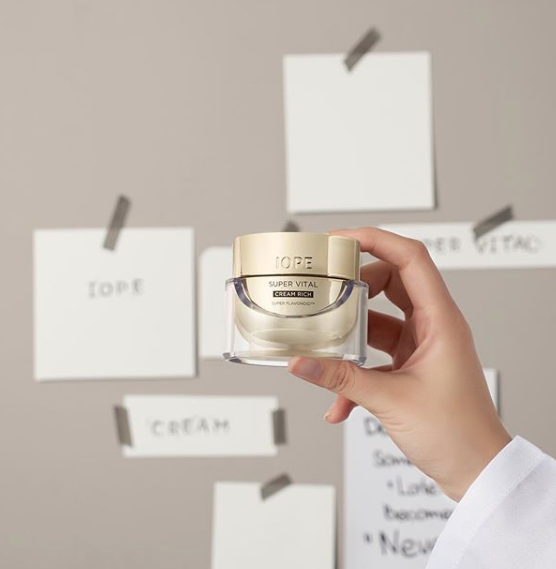And that 10-step skincare routine? Curating it down to what actually works for you just might be the first step in sustainability in beauty.
When the K-beauty train finally caught on in the U.S., one of the most popular takeaways was the 10-step routine. Instead of the basic Western cleanse, tone, moisturize routine, everyone started incorporating serums, ampoules, lotions, sheet masks, sleeping masks, etc., to their routine. It was around this time that the #shelfie became a thing — influencers showing off rows and rows of meticulously organized skincare products for the ’gram and YouTube. And yea, I was also one of those people. I collected skincare like Pokemon — gotta catch them all, right?
But, and maybe you’ve noticed this, the pendulum has swung completely in the opposite direction. The 10-step routine has had a swift fall from grace. Part of it is due to the fact that a lot of people have realized you don’t *have* to use all 10 steps and have begun curating a skincare experience that works for them. But the other half? Well, it’s about saving the planet.

There’s a lot of waste in beauty
Think of the products you use in your beauty routine — everything from deodorant and razors to shampoo/conditioner and shaving cream, all of your skincare items, your body care items. It’s a LOT of plastic. Even if you are big on recycling everything, a vast majority of the packaging in beauty products can’t be recycled. Those pumps, metal springs, colored plastics can’t be recycled so all of that ends up in the garbage and, in turn, the ocean, rivers, other waterways. Kind of makes you think differently about pretty packaging and the luxe aesthetics that we associate our beauty products with now. Is it worth it to post a photo on Instagram if after a few months that product ends up getting tossed in the garbage?
And luxury beauty products might be some of the worst offenders of all. Listen, I’m a sucker for heavy, luxe packaging that has all sorts of colors and comes packaged in a limited edition box, but is it worth it? One of the more baffling packaging choices comes from one of my favorite brands, Pat McGrath Beauty. If you order online (and in a few products in stores), the brand includes an absurd amount of plastic sequins (or plastic black confetti) in your box. Sure, it’s aesthetically pleasing, but all of that plastic literally ends up in the trash and serves zero purpose besides looking good in a photo. Thankfully, Instagram accounts like @esteelaundry continue to call them and other brands out for wasteful packaging, so I have a small sliver of hope that these brands will think about the environmental impact their products have.
View this post on Instagram
What brands are doing about sustainability in beauty
Thanks to a growing number of people who are realizing the environmental damage that single-use products are contributing to the planet, brands and companies have stepped up to combat this issue head on. Major hotel chains, like Marriott, have eliminated single use plastics and are instead using refillable bottles in their hotel rooms. And over in Korea, AmorePacific, one of the largest cosmetic manufacturers, is preparing for “the age of no plastic” by partnering with TerraCycle, a social enterprise dedicated to eliminating the idea of waste. According to Global Cosmetic Industry, AmorePacific Group, with its partnership with TerraCycle, is pledging to:
* recycle at least 100 tons of empty plastic bottles each year for three years;
* increase the ratio of using recycled empty bottles for AmorePacific products and furnishings, 10% in the first year, 20% in the second, and 30% in the third year; and
* achieve 100% recycling of empty bottles and 50% of those used for products and furnishings by 2025.

And instead of wrapping their products in bubble wrap plastic during shipping, AmorePacific has also pledged to use paper packaging instead. The beauty giant also employs the use of biomass plastics, a material that is made partly or entirely from renewable plant-based materials, as well as recycled plastics that make up a large portion of packaging at Innisfree and Etude House.
I hope, for the sake of our planet, more companies can let go of pretty packaging that will be thrown in the trash and embrace more sustainable options. Reusable, refillable options are the best choice, followed by the use of compostable and recycled materials. Our planet depends on it! And for consumers, it’s important that we give our money to brands that are on board with sustainability in beauty, or simply (and this is hard for me to admit) we just have to stop buying so much stuff.
How do you feel about the sustainability in beauty movement? Let me know in the comments!
Loading...